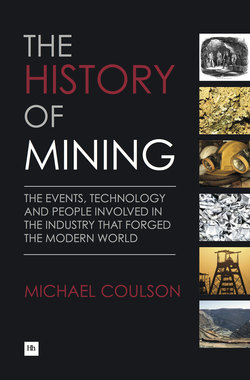Читать книгу The History of Mining - Michael Coulson - Страница 15
На сайте Литреса книга снята с продажи.
7. The Eastern Mediterranean and the Near/Middle East
ОглавлениеApart from Egypt, a giant in ancient times, other important and prosperous states were located at the eastern end of the Mediterranean and some of them like Crete and Mesopotamia accumulated considerable quantities of gold. This gold was largely under the ownership of the royal houses, as it was in Egypt, underlining the idea that wealth in these early times was significantly in the hands of kings and princes.
Crete and Mesopotamia were insignificant gold producers so their gold would have come from neighbouring states such as Egypt, indicating an active trading environment in that part of the world. Crete, which was a substantial sea power, would have obtained gold from the northern Aegean and from the Balkans and the Danube states, where gold was mined extensively. This gold would have been shipped through Aegean ports.
There are also theories that the Egyptians launched expeditions in the 11th century BC to eastern Africa and brought back gold from mines in the area that is now Mozambique and Zimbabwe. The Phoenicians in the 6th century BC are believed to have circumnavigated Africa, starting in the Red Sea, and brought back gold from both the eastern and western sides of the continent. It is also more than likely that large quantities of gold reached the Middle East from the neighbouring Arabian Peninsular where ancient gold workings of considerable size have been identified at Mahd adh Dhahab in Saudi Arabia near Mecca. The current mine there is a high-grade one by today’s standards (plus 20gms per tonne), and it is believed the ancient mine operated during the reign of King Solomon.
